Manure as fertilizer: how to prepare and apply?

Organic matter, called manure, is a natural biological waste product from the digestion of various domestic animals or poultry. This component is used for fertilizing agricultural crops in order to increase their yield. Natural organic fertilizers have a high concentration and are valuable for any agricultural crop grown by humans. The benefits of manure are undeniable, but it is important to use it correctly so as not to harm plants and human health.
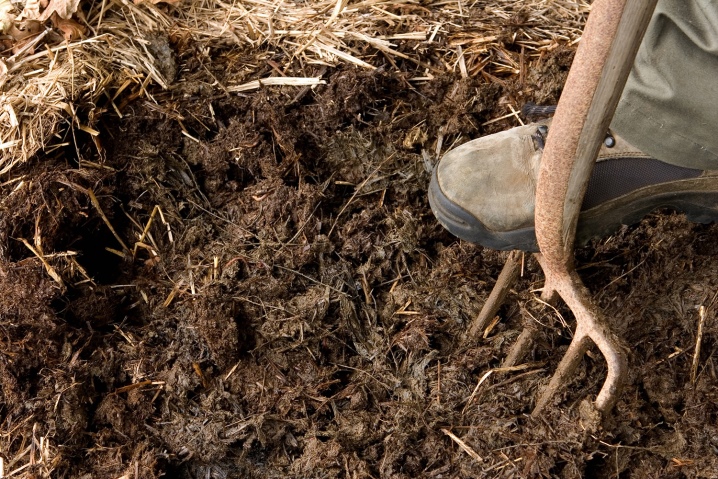
Benefit and harm
According to its composition, manure as a fertilizer contains valuable elements that are assimilated by plants - these are potassium, magnesium, nitrogen, phosphorus, calcium and other trace elements. Studies have shown that chicken manure is the richest in nitrogenous substances, a little less of these components is found in rabbit manure, even less nitrogen is found in goat and sheep droppings, followed by horse manure, and pig manure is in last place in terms of the element content. Sheep droppings are considered the champion in terms of potassium and magnesium content, while all other types of manure contain slightly less of it. And the largest amount of phosphorus elements is in pig manure. If we compare the concentration of the substance, then it will turn out to be twice as much as compared with cow dung.
The benefits of using manure are due to a number of facts.
- Pet droppings contain components that plants need to improve growth and fruiting, which is achieved by improving the physical and chemical structure of the soil after applying manure to it. In the process of fermentation, manure forms nutritious humus compounds, which increases the fertility of the soil composition.
- Any kind of manure is a source of biologically active micro- and macroelements. In addition, the droppings also contain a variety of bacteria and microorganisms, which is a valuable source of nutrition and energy that the bacterial microflora of the soil needs.
- Each type of litter has its own characteristics. For example, they are distinguished by the level of acid-base environment. The pH of cow dung is up to 8.2 units, horse dung up to 8 units, and in pig dung it is 7.8 units. When manure is introduced into the soil, its acidity decreases with a shift to an alkaline environment.
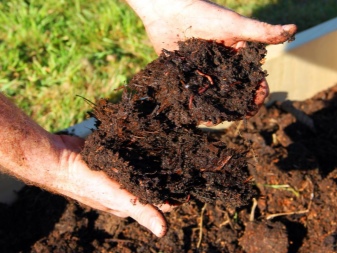

If we compare mineral chemical and natural organic fertilizers with each other, then organic matter much better nourishes and improves the structure of the soil composition, loosens the soil, increases its absorbency, and also saturates the useful microflora necessary for plant growth... All components of organic matter are delivered to plants in an easily assimilated form.

The use of manure should be strictly dosed - it must be applied according to certain rules. If these conditions are neglected, then organic matter can harm crops.
- Root burns. Due to the high concentration of organic matter, fresh manure cannot be used; you need to wait until the droppings are overwhelmed. In addition, fresh manure, when it enters moist soil, begins to actively interact with the soil microflora, while releasing a large amount of gas and thermal energy. Such processes are due to the fact that fresh manure contains a lot of methane and nitrogen. The beginning process burns the root system of plants and destroys their vitality.Concentrated fresh manure is especially dangerous for the roots of young immature plants.
- Acidification of the soil substrate. The application of manure, such as pig manure, can acidify the soil, and most plants cannot grow in such an environment, since they prefer neutral, slightly alkaline or slightly acidic soil indicators. To avoid acidification, large amounts of manure should not be introduced into the soil, and wood ash, lime or dolomite flour should be used as a deoxidizer. Deoxidizers should be applied separately with manure so that both substances cannot contribute to the production of large amounts of ammonia, which is harmful to plants. When this substance is released, the soil will lose nitrogenous compounds, and its fertility will deteriorate.
- The presence of weed seeds. Since animals mainly feed on grasses, seeds enter their gastrointestinal tract, which in an unprocessed form enter the droppings, and along with it - to your garden. The nutrient medium will allow weeds to grow violently, but such seeding will not occur if you use already rotted manure.
- Excess nitrogen. Litter is a fertilizer that contains a lot of nitrogen. The excess amount of nitrogen that has entered the soil is converted into nitrates under the influence of soil microflora. An excessive amount of nitrates from the soil enters the grown berries, fruits and vegetables, causing harm to the human body. Only a verified dosage will help to avoid the accumulation of nitrates in the soil and agricultural products grown on it.
- Pest transfer. Together with manure, microorganisms and bacteria, sometimes not only favorable, but also pathogenic, enter the garden bed. Eggs of helminths or insect pests can get into the garden, and from there with vegetables and fruits into the human body. Often, the smell of droppings attracts insects. The bear is especially fond of fresh manure, which lays eggs in piles of droppings so that her offspring can overwinter and become more active in spring.

For manure to be a useful component, when using it, you should know the correct dosages and rules for its use.
Views
The variety of manure used to stimulate plant growth does not only depend on the type of animal or bird being used. The composition of organic fertilizer also depends on the litter, which is also part of the manure. When combined with it, the concentration of droppings decreases, but in its composition, the amount of potassium increases. The type of litter on which a bird or animal lives is straw, peat or sawdust. Fertilizer with straw is considered the best for the garden, and the peat mixture has the least value.
For fertilizers, manure is used not only from cloven-hoofed animals. For the purpose of plant nutrition, poultry droppings are also used - chicken manure, quail manure. For the best combination, sometimes different types of manure are combined.
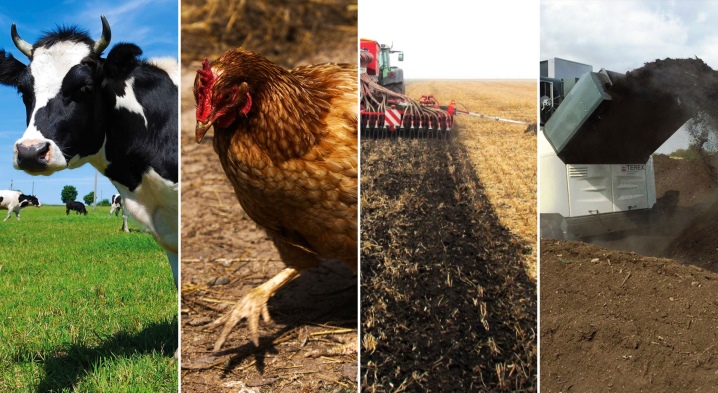
Bovine
This type of manure maximizes its nutritional properties for the first 2-3 years (when the manure is introduced into sandy or sandy soils). It retains its effectiveness in clay substrates for much longer - there its effect lasts up to 6 years. Mullein is considered the most common organic species and is suitable for all types of plants. But at the same time, cow dung is the least fertile. According to research, 1 kg of the substance contains up to 3.4 grams. nitrogenous components, up to 2.8 gr. calcium, about 2.9 gr. phosphorus and up to 1.5 gr. potassium. In addition, the composition of manure includes sulfur, magnesium, sodium. The indicators of the chemical composition change depending on what kind of food the animal had, its age and sex. Dung from adult animals is about 17–20% more fertile than manure from young animals.The low content of nutrients in the mullein reduces the likelihood of burning the root system and overfeeding the plants, which would entail the appearance of nitrates in the crop.
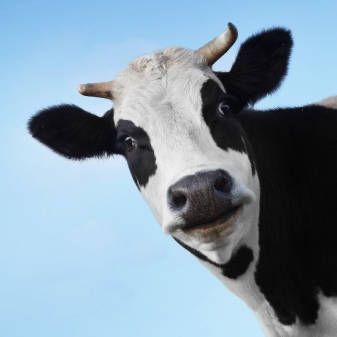
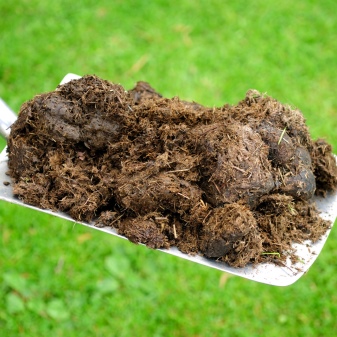
Horse
It is considered the most nutritious and balanced organic fertilizer in its composition. Horse manure has a more porous structure than mullein. When released into the soil, this manure decomposes with the release of a large amount of heat, so it has established itself as an effective means of feeding plants in open ground and in greenhouse conditions. Unfortunately, horse dung is now less readily available than cow dung. This is due to a decrease in the number of animals.

Rabbit
Rabbit droppings are fairly dry and dense. Due to its compactness, it is easier to transport. Experts using this fertilizer note that the droppings are not only useful for plants, but also do not contain weed seeds in their composition, because rabbits feed only on leaves and stems of plants. Rabbit droppings are rich in nitrogen, magnesium and potassium. Plants absorb such feeding well, and it is suitable for almost any horticultural crops. The droppings may contain coccidia, which cause protozoal intestinal diseases in rabbits. For this reason, droppings from sick individuals should not be placed next to healthy rabbits. For humans, coccidia are not dangerous.
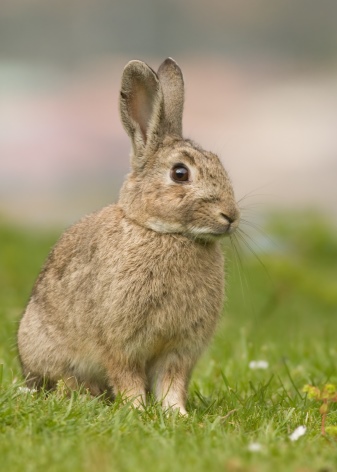

Pork
The composition of pig manure contains little calcium, but can quickly acidify the soil. Therefore, this fertilizer is not suitable for all types of crops, and it is rarely used. Pig droppings are known for low heat release when overheated, and the decomposition time is much longer than that of other animal droppings. Most of all, manure contains nitrogen, in undiluted or fresh form, it can burn the root system of plants. Pig droppings contain not only weed seeds, but also pathogens of intestinal infections, as well as helminth eggs that are dangerous to humans. If you add such droppings to slightly acidic soil, it will become acidified, that is, it will become impossible to grow anything on it without deoxidation. Sometimes this type of manure is combined with horse manure, and dolomite flour is also added to the composition.
The mixture can be used only after a year, when the compost is naturally cleared of harmful bacteria and helminths.
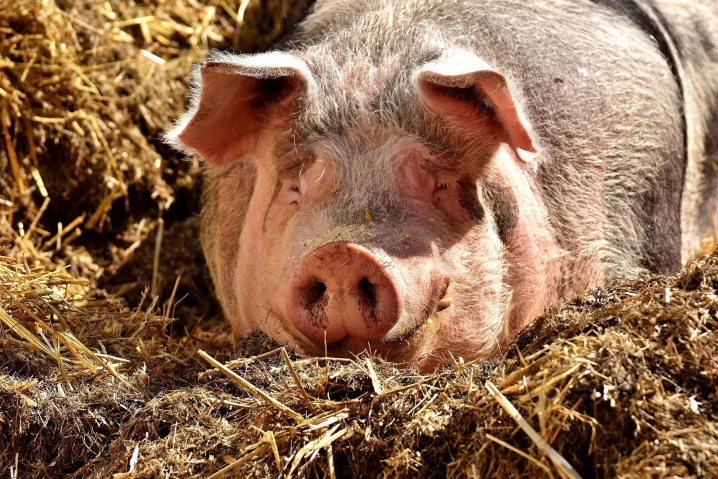
Chicken
Poultry manure is known to be the fastest-acting organic fertilizer, with a decomposition time of 1 year. But it is worth remembering that the concentration of this agent is so great that to use it you need to dilute it 12 times. The litter contains potassium, calcium, nitrogen, phosphorus, magnesium. Their concentration is 4 times higher than in animal manure. After application to the soil, the composition will show the best indicators in the first year, but even after 2-3 years its properties will still be preserved, albeit in a slightly smaller volume. Chicken droppings significantly increase productivity, and also takes part in the formation of soil humus and deoxidation of soil.
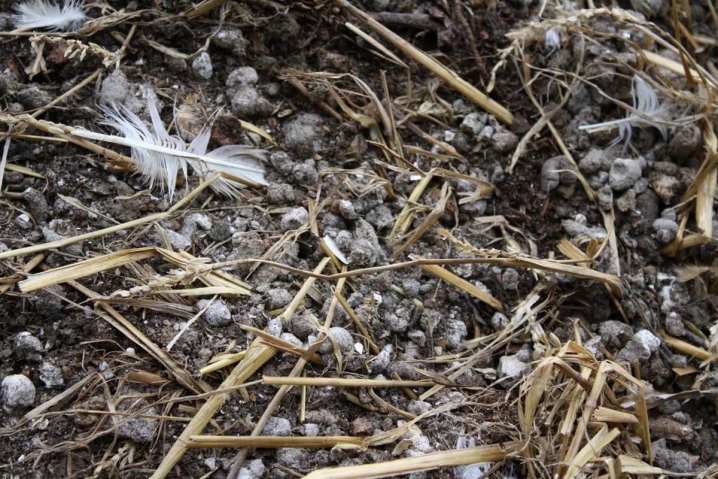
Goat
It is believed that goat droppings are 8 times more nutritious for plants than mullein, and this is due to the high content of nitrogenous components. Goat manure can decompose rather quickly and generate a large amount of heat, for this reason it is used to improve the qualities of dense soil, which is difficult to warm up by the sun's rays. 1 kg of manure contains up to 2.6 grams. phosphorus, up to 5.8 gr. potassium and about 5 gr. nitrogen. This composition allows you to apply fertilizer to the soil 3-4 times less often than horse or cow manure. Goat droppings are used for organic fertilizing of almost any agricultural crops. Tomatoes and cucumbers, as well as onions and garlic, respond best to such fertilization.
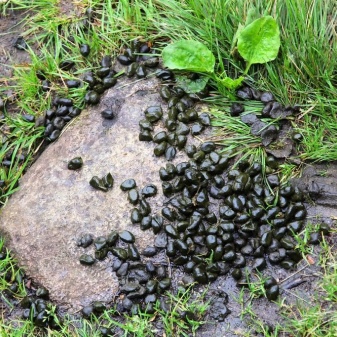
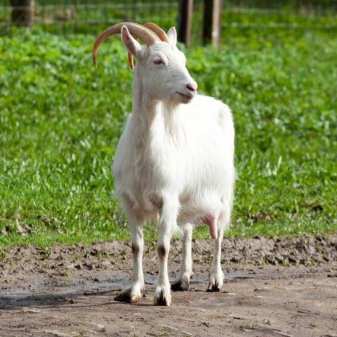
Sheep
A highly efficient fertilizer is sheep (or mutton) manure. It decomposes with the release of a large amount of heat, and it is used to saturate clay soils or loam with organic components. Sheep droppings do not have a high concentration of potassium, magnesium, nitrogen and phosphorus, but if you compare it with horse droppings or mullein, the sheep's waste product is denser and drier. To soften sheep dung for use as a fertilizer, it is pre-impregnated with slurry.... As a fertilizer, such manure is used extremely rarely, most often it is used in the form of dry fuel for kindling furnaces.
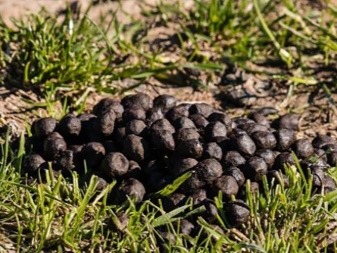

In what form is it used?
As an organic fertilizer, bird or animal droppings are used after preliminary preparation. When processed, it helps restore the structure and fertility of depleted soils. Manure can be used in several ways.
- Fresh manure. It is used only in the case of mixing it with other organic matter and subject to the isolation of the roots during feeding. Most often, fresh manure is scattered across the field in the autumn after harvest, so that during the winter it has time to overheat and fertilize the soil by the time of spring planting. It is imperative to bury the droppings in the soil, and this is done by digging over the entire surface of the field. Each square meter requires up to 10 liters. manure. Quite often, mullein is used to fertilize the soil, less often horse manure. Rabbit or pork droppings are not used before winter due to their high concentration and the impossibility of uniform distribution (for rabbit droppings).
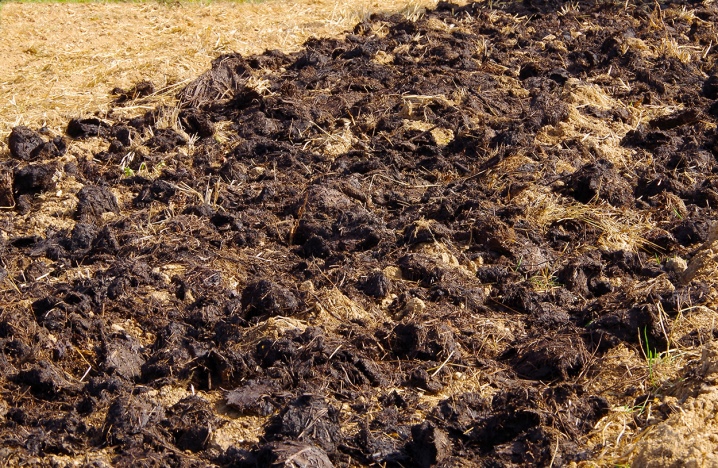
- Dry manure. Within 2-3 years manure can dry well, after which it becomes light, crumbly, but does not lose its valuable components. After drying, the manure should be free of helminths and pathogens. Horse and horse droppings dry for 3 years, chicken dries up in a year. To speed up the drying process, the manure is regularly turned over with a pitchfork - this way it warms up and dries up more evenly. When planting plants, dry manure is added to the planting hole - this is done when planting peppers, cucumbers, tomatoes. After watering, the plant is provided with components valuable for its growth for a long time. This fertilizer is also suitable for feeding home flowers growing on a veranda or balcony.
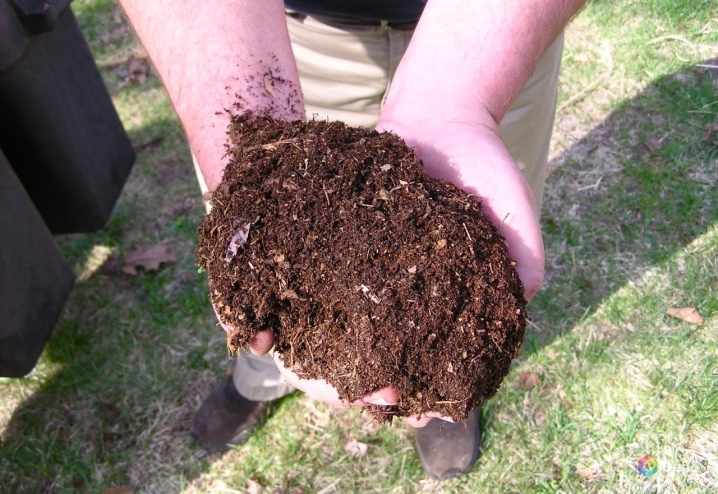
- Manure in the form of granules. It is released by pelleting fresh droppings. Granules do not contain moisture, they are easy to transport and do not have a strong manure smell. Such organics are used for long-term fertilizing by burying the granules into the soil. After watering, they begin to swell and decompose, nourishing the soil and plants.
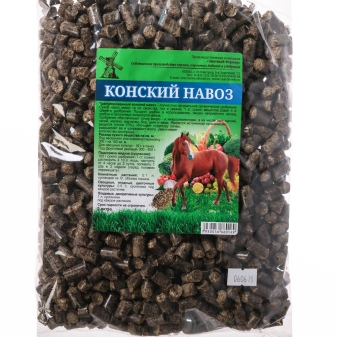
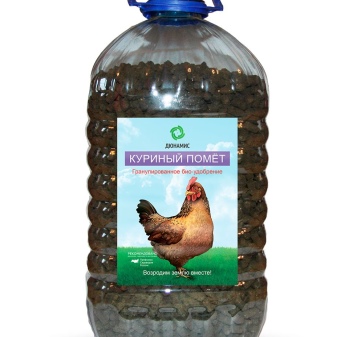
- Liquid kind of organic matter. Liquid manure that is marketed in bottles or cans. This is a concentrate of fermented bird or animal droppings; before use, the composition will need to be diluted with water according to the instructions. Manure concentrate is the most convenient form of application compared to natural manure.

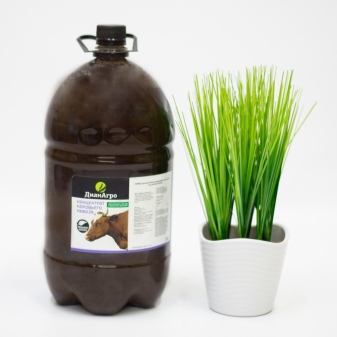
Often, organic matter is also mixed with an additional mineral complex, resulting in a complex universal fertilizer.
Processing methods
The use of organic fertilizers depends on the shelf life and the method of processing. Various methods are used to prepare the working composition.
- Overheating. The simplest method is the storage of manure for the purpose of its preparation from 3-12 months. For storage, in accordance with the veterinary and sanitary rules for the preparation of manure as organic fertilizers, it is required to make a special box. Ready manure can be rotted or semi-rotted, having a plastic consistency and a darkened color. Most often, mullein or horse droppings are prepared in this way in order to deepen it by 40-50 cm when digging a planting site. In well-rotted manure, the structure of the litter no longer differs, and the loose composition of organic matter is introduced into the area of the root circle of the plant.If necessary, rotted manure can be diluted with water and a working solution for irrigating crops can be prepared.
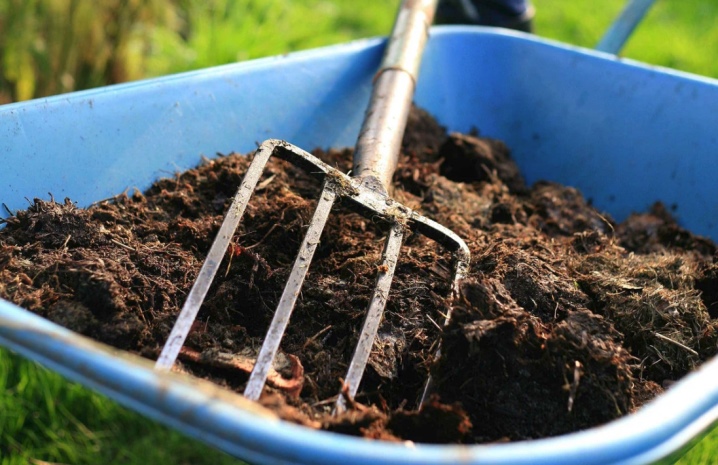
- Humus. To prepare it, the droppings are piled up, inside which the decomposition process takes place with the release of heat. Microorganisms and bacteria process manure into humus, and in the end, a loose, light and nutritious substance of dark color is obtained, similar to a fertile soil layer. To get good humus, you need enough space - for this purpose, a certain area is allocated and lattice walls are used in the form of additional equipment, which are necessary so that the pile of manure does not crumble, but inside it there is a circulation of air masses. The finished product is used in the form of mulch or working solutions for irrigation are made.
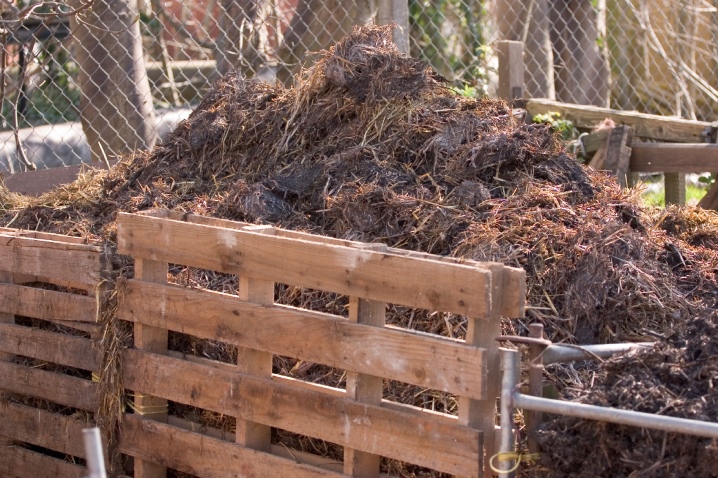
- Vermicompost. The manure is processed using earthworms. In addition to droppings, organic matter is added to the compost in the form of plant fragments, food waste and other organic matter. Next, Californian worms are added to the composition. The whole process takes place in high piles, which are regularly poured with water and turned with a pitchfork. During digging, lime or peat is added to the compost. Literally after 3 months, the worms process organic matter, and a light and nutritious fertile substrate is obtained, which is used as mulch.
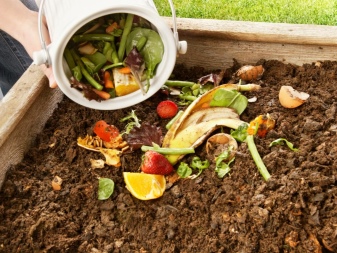
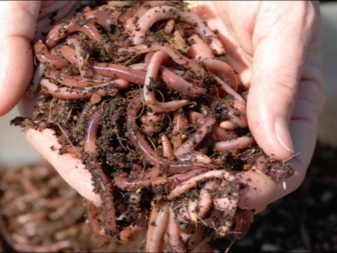
- Compost with humates. Special humic substances are added to the droppings, contributing to the rapid decomposition of organic matter and the destruction of pathogenic bacteria. To process 20 kg of manure, 20 g is required. humates, they are diluted with water and manure is spilled with a solution. The resulting composition is regularly mixed with a pitchfork and after 3 months. organic fertilizer is ready to be applied to the soil as a top dressing for berry and fruit crops.
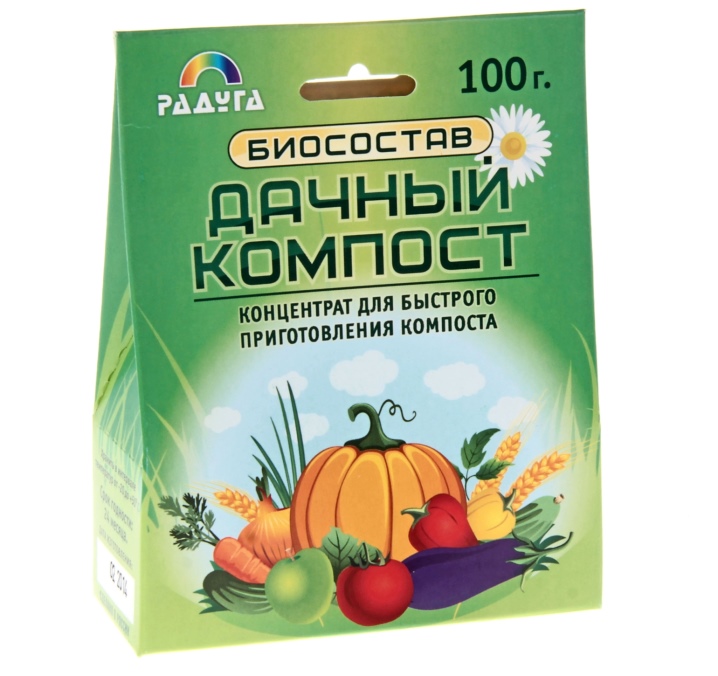
- Infusion of mullein. It is prepared by combining cow droppings with water in a ratio of 1: 4. This method allows you to quickly get rid of weed seeds, helminth eggs and pathogenic microflora. All valuable components remain in a well-fermented composition, but in order to fertilize plants with them, additional dilution with water will be required.
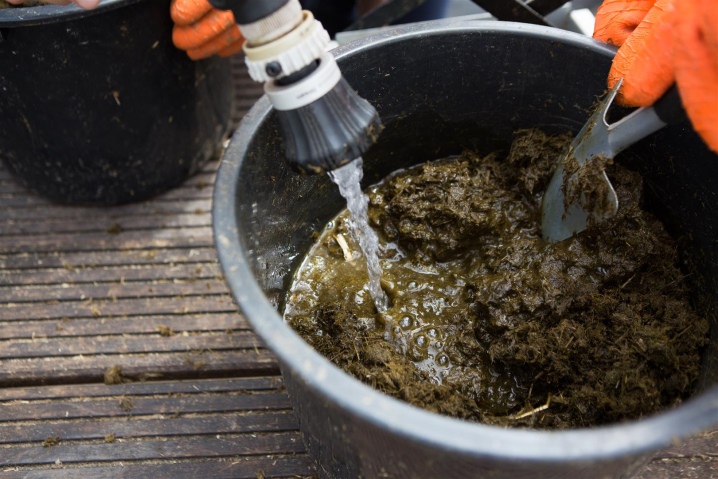
The choice of preparation method depends on the initial amount of droppings and the availability of conditions for its processing.
Why and how to make it right?
Plants love organic fertilizers, their use justifies itself with high yields, if you use such a top dressing in spring or autumn. Vegetable crops can be fertilized with manure: potatoes, tomatoes, cucumbers, and also manure is applied under berry fields or under fruit trees. The use of manure is also effective as an autumn top dressing when applying the composition to the soil.
There are several rules for applying manure to the soil.
- For top dressing, fresh manure is not used. You can use rotted droppings or humus.
- Manure solutions are not poured under the root of the plants, but are introduced into specially made aisles.
- Autumn is considered the best time to apply fresh manure to the soil. Manure that has matured over the winter will provide the plants with a sufficient amount of nutrition for their entire growing season.
- It is advisable to use manure in the form of humus in spring, when plants need strength for flowering and a set of fruit ovaries.
Experienced gardeners also do this: in the fall, humus is added to the soil, and in the spring and summer months they perform root top dressing with working solutions of rotted manure.
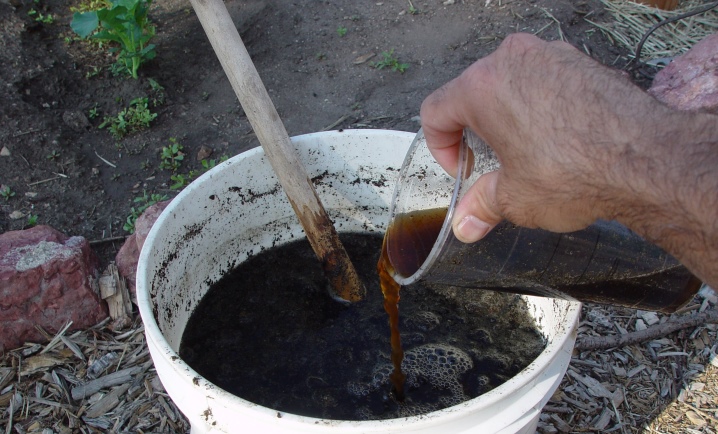
Review overview
According to reviews of experts in the field of agronomy, experienced gardeners and biologists, the use of manure for growing any crops is simply necessary. Without this organic bioactive additive, it is impossible to achieve normal plant growth and development, as well as to harvest a full harvest.
According to the reviews of Russian gardeners, most often a liquid form of horse or cow manure is used on personal plots. Chicken droppings are used a little less often. Other types of organic matter are less available, and therefore are not very common among gardeners.In addition to the liquid form, granular fertilizers are also common, and organic compost is also very popular for fertilizing.
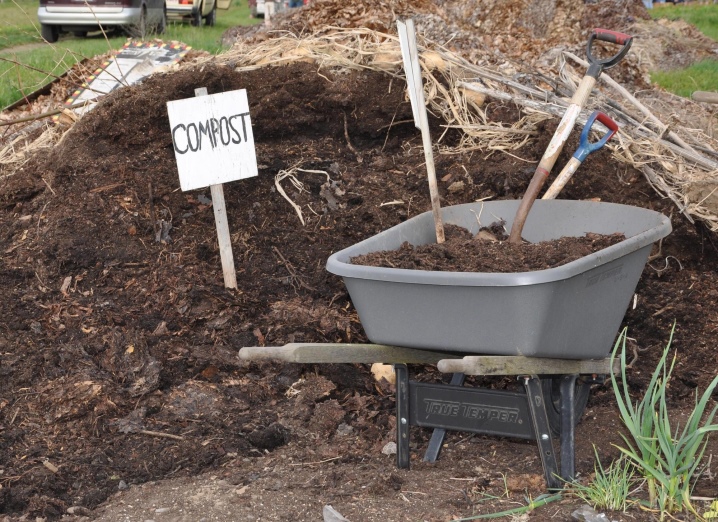
Many modern agricultural enterprises use cow and horse manure in combination with mineral components to grow agricultural crops on an industrial scale. This combined fertilizer gives high results in yield and product quality.
For the preparation of manure, see the next video.













The comment was sent successfully.